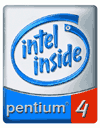Als Tweaker die in de running is voor een nieuw Pentium 4 systeem, wil je natuurlijk weten met welke chipset je het maximale uit je Pentium 4 kunt halen. Ace's Hardware probeert in dit artikel hier erachter te komen door de huidige chipsets, de i850, i845, i845D, SiS 645 en P4X266A het tegen elkaar op te laten opnemen. Als vergelijkend materiaal wordt er ook nog een Athlon 1400 en Athlon XP 2000+ meegenomen. Nu zul je zeggen, dit soort testen zijn al eerder voorbij gekomen en hoewel dat ook zo is, biedt het artikel van Ace's Hardware een aantal extra's. Alle Pentium 4 chipsets worden zowel met een Pentium 4 met 256kb cache (Willamette) alsook met een 512kb (Northwood) getest, iets wat tot nu toe nog niet eerder vertoond is. Ook de snelste Pentium 4, de 2,2Ghz Northwood wordt meegenomen in de benchmarks
 Uit de vele testen die Ace's Hardware draait, blijkt dat de Athlon XP 2000+ alle Pentium 4's met gemak verslaat in zowel Serious Sam als Max Payne. In de overige benchmarks is het soms de Athlon XP 2000+ en soms de Pentium 4 die het snelst is. De SiS 645 chipset met PC2700 DDR-DRAM doet het opvallend goed. De prestaties blijven maar enkele procenten achter ten opzichte van de i850 chipset met PC800 Rambus geheugen. Maar het meest opvallende is dat het verhogen van de FSB van de Pentium 4 naar 533Mhz in combinatie met Rambus (PC1066) de meeste performance uit een Pentium 4 weet te halen. Alleen de SiS 645 met PC2700 en een Pentium 4, uitgerust met 512kb cache, weet in de buurt te komen van een Pentium 4 op een i850 met PC1066 geheugen. Het lijkt er dus op dat Rambus nog lang niet afgeschreven mag worden, zeer zeker als je dit artikel erbij neemt waarin nader wordt ingegaan op de problemen die er ontstaan met DDR-DRAM als de snelheid wordt verhoogd. Een probleem waar Rambus geheugen minder last van heeft:
Uit de vele testen die Ace's Hardware draait, blijkt dat de Athlon XP 2000+ alle Pentium 4's met gemak verslaat in zowel Serious Sam als Max Payne. In de overige benchmarks is het soms de Athlon XP 2000+ en soms de Pentium 4 die het snelst is. De SiS 645 chipset met PC2700 DDR-DRAM doet het opvallend goed. De prestaties blijven maar enkele procenten achter ten opzichte van de i850 chipset met PC800 Rambus geheugen. Maar het meest opvallende is dat het verhogen van de FSB van de Pentium 4 naar 533Mhz in combinatie met Rambus (PC1066) de meeste performance uit een Pentium 4 weet te halen. Alleen de SiS 645 met PC2700 en een Pentium 4, uitgerust met 512kb cache, weet in de buurt te komen van een Pentium 4 op een i850 met PC1066 geheugen. Het lijkt er dus op dat Rambus nog lang niet afgeschreven mag worden, zeer zeker als je dit artikel erbij neemt waarin nader wordt ingegaan op de problemen die er ontstaan met DDR-DRAM als de snelheid wordt verhoogd. Een probleem waar Rambus geheugen minder last van heeft:
Our loyal readers might not be surprised as our PC1066 review already pointed this out. However, back then, we tested with a 1.6 GHz Willamette. The higher the clockspeed, the more the DRDRAM solution lives up to its promise. However, once paired with the larger cache of Northwood, the DDR chipsets are not outperformed by a great margin. The SiS645, with it's support for PC2700 can even beat the i850 chipset in a few benchmarks.
However, the DDR SDRAM technology is clearly reaching it's signal integrity limits. Consider this:
- Intel only supports 4 banks of PC2100 memory or maximum 1 GB to ensure the best stability (signal integrity!).
- With two DIMMs, the SiS645 chipsets can run the best DDR SDRAM on the market only with a CAS latency of 2.5
- With three DIMMs, the SiS645 boards have to throttle back to PC2100 (see here).
- With four DIMMs, the VIA's P4X266 has to throttle back to PC1600 for stability reasons (VIA chipsets natively only supports 6 physical banks of memory)
- Many of the DDR boards experienced stability problems when we tried to run with three DIMMs.
- PC2100 clearly lacks bandwidth when it must feed 2.6 to 3 GHz Pentium 4s and it becomes clear that DDR-I is not the best choice for an intensive workstation that needs huge amounts of memory. It is very doubtful that any current chipset is able to drive more than 1.5 GB of PC2100 memory, let alone PC2700.
So while PC2100/2700 is a good choice for the average desktop, it is clear that DDR doesn't cut it for the power user, especially if this power user prefers a highly-clocked Northwood processor. Registered (buffered) DDR is a solution for the workstation user who needs a lot of RAM, but it is not really a high-performance solution (higher latencies, bandwidth limited to 2.1 GB/s).
So what is the solution? DDR-400? DDR-II? A comeback by RDRAM (PC1066, RIMM4200) or dual-channel DDR SDRAM? We have only scratched the surface. To explain the benchmarks that we have seen today, and to understand what the challenges that future memory technology must face, we must go in-depth. In the next article we will discuss the technical pros and cons of all these solutions. Stay tuned...

:strip_exif()/i/1019768446.jpg?f=thumbmedium)